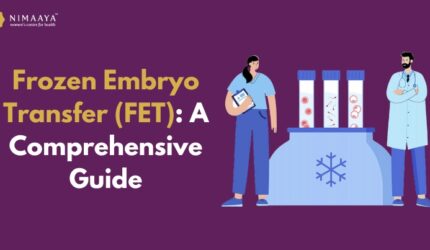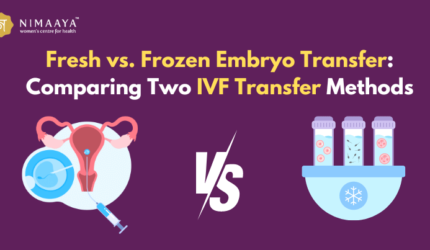Embarking on the journey towards Frozen Embryo Transfer (FET) is a significant step in the pursuit of parenthood for many couples. As you prepare for this pivotal moment, ensuring you’re equipped with the right lifestyle adjustments and pre-treatment considerations can greatly enhance your chances of success. In this guide, we’ll delve into the crucial aspects of preparing for FET, from understanding the frozen embryo transfer timeline to optimizing your FET protocol, all aimed at maximizing your chances of a successful outcome. Whether you’re just beginning your FET journey or seeking to enhance your existing preparations, this comprehensive resource will provide invaluable insights to aid you along the way.
What are Frozen Embryo Transfer Treatments?
Frozen embryo transfer (FET) treatments involve the transfer of cryopreserved embryos into the uterus during an IVF cycle. These embryos are typically created during a previous IVF cycle but were not transferred at that time. Instead, they were cryopreserved through a process known as vitrification, which preserves their viability for future use.
FET offers several advantages, including the ability to carefully time the transfer to optimize the chances of successful implantation and pregnancy. It also allows for the selection of the most viable embryos, as they have undergone thorough evaluation before freezing. Frozen embryo transfer treatments play a crucial role in assisted reproductive technology (ART), offering hope to individuals and couples facing infertility challenges on their journey to parenthood.
Understanding the FET Procedure

The Frozen Embryo Transfer (FET) procedure marks a pivotal moment in the journey toward parenthood for many individuals undergoing fertility treatments. This carefully orchestrated process involves the transfer of cryopreserved embryos into the uterus with the ultimate goal of achieving a successful pregnancy. Let’s delve into the intricacies of the FET procedure and explore the steps involved in this transformative journey.
❧ Preparation Phase:
Before proceeding with the FET procedure, thorough preparation is essential to ensure optimal conditions for embryo transfer and implantation. This often begins with a detailed review of the patient’s medical history, including preparing for FET, previous fertility treatments, and any underlying health conditions that may impact the success of FET. Additionally, pre-treatment evaluations, such as uterine cavity assessments and hormonal tests, may be conducted to assess the viability of the uterine environment for embryo implantation.
❧ Endometrial Preparation:
Central to the success of the FET procedure is the preparation of the uterine lining, known as the endometrium, to create a receptive environment for embryo implantation. This typically involves a carefully orchestrated hormone therapy protocol designed to synchronize the growth of the endometrium with the timing of embryo transfer. Medications such as estrogen and progesterone may be administered to mimic the natural hormonal fluctuations of the menstrual cycle and optimize the thickness and receptivity of the uterine lining.
❧ Embryo Thawing and Selection:
Once the endometrium is adequately prepared, the next step in the FET procedure is the thawing and selection of cryopreserved embryos for transfer. Embryos are carefully thawed under controlled conditions to ensure their viability and integrity. Following thawing, fertility specialists meticulously assess the quality of the embryos based on criteria such as cell division, symmetry, and overall viability. Only the highest quality embryos are selected for transfer, maximizing the chances of successful implantation and pregnancy.
❧ Embryo Transfer:
With the selected embryos ready for transfer and the endometrium primed for implantation, the FET procedure culminates in the actual embryo transfer. This typically involves a minimally invasive procedure performed under ultrasound guidance, allowing the fertility specialist to precisely position the embryos within the uterine cavity. The number of embryos transferred may vary depending on factors such as patient age, embryo quality, and previous treatment history. Patients are frequently recommended to take a short break after the transfer before starting their regular activities again.
❧ Post-Transfer Care and Monitoring:
Following the FET procedure, diligent post-transfer care and monitoring are essential to support embryo implantation and early pregnancy development. Patients may be prescribed additional medications, such as progesterone supplements, to support the uterine environment and promote embryo implantation. Close monitoring through blood tests and ultrasound examinations allows fertility specialists to track the progression of early pregnancy and make any necessary adjustments to the treatment plan.
Preparing for FET Procedure
As the day of your FET procedure approaches, there are several pre-treatment preparations to consider. These may include lifestyle adjustments aimed at promoting overall health and well-being, such as maintaining a balanced diet, regular exercise routine, and adequate sleep. Additionally, minimizing stress levels through relaxation techniques, mindfulness practices, or seeking support from loved ones can contribute to a conducive environment for successful embryo implantation.
Consulting with your healthcare provider at Nimaaya IVF center in Surat can provide further guidance on specific pre-treatment measures tailored to your individual needs. As the day of your preparing for FET procedure draws near, it’s essential to focus on pre-treatment preparations that can optimize your chances of a successful outcome. The following are some important things to remember:
▪️ Nutritional Optimization:
Fueling your body with nutrient-rich foods can support overall health and reproductive function. Make eating a healthy, well-balanced diet high in whole grains, lean meats, and veggies a priority. Incorporating foods high in antioxidants, such as berries, nuts, and leafy greens, can also benefit reproductive health by reducing oxidative stress and inflammation.
▪️ Regular Exercise:
Engaging in regular physical activity not only promotes cardiovascular health and weight management but can also positively impact fertility. Aim for at least 30 minutes of moderate exercise most days of the week, choosing activities you enjoy such as walking, swimming, or yoga. However, it’s important to avoid excessive or strenuous exercise, as this may negatively affect fertility.
▪️ Quality Sleep:
Adequate sleep is crucial for hormone regulation, immune function, and overall well-being. Strive for 7-9 hours of quality sleep each night, maintaining a consistent sleep schedule whenever possible. Creating a relaxing bedtime routine and optimizing your sleep environment can help improve sleep quality and support reproductive health.
▪️ Stress Management:
High levels of stress can negatively impact fertility by disrupting hormone balance and affecting reproductive function. Incorporating stress-reduction techniques such as deep breathing exercises, meditation, or mindfulness practices into your daily routine can help alleviate stress and promote emotional well-being. Additionally, seeking support from loved ones or joining a support group for individuals undergoing fertility treatments can provide valuable emotional support during this time.
▪️ Consultation with a Specialist:
Your healthcare provider like at Nimaaya IVF Surat is your partner in this journey towards parenthood. Schedule a pre-treatment consultation to discuss any concerns or questions you may have and to receive personalized guidance on pre-treatment measures tailored to your individual needs. Your provider can offer recommendations on dietary supplements, lifestyle modifications, and stress management strategies to optimize your chances of success with the FET procedure.
By prioritizing these pre-treatment preparations and seeking guidance from your healthcare provider at Nimaaya IVF center in Surat, you can feel confident and empowered as you preparing for FET procedure. Remember, every step you take towards enhancing your overall health and well-being contributes to the success of your fertility journey.
Navigating the FET Protocol
The success of FET hinges on adherence to a meticulously planned protocol tailored to individual patient needs. Your fertility specialist will devise a personalized frozen embryo transfer protocol based on factors such as your medical history, reproductive health, and specific treatment goals. This protocol may involve hormone therapy to prepare the uterine lining for embryo implantation, as well as medications to support embryo transfer and subsequent implantation. Understanding and following your FET protocol diligently is crucial for optimizing your chances of success.
Evaluating Frozen Embryo Transfer Success
While every FET journey is unique, certain factors can influence the likelihood of success. These may include the quality of the embryos being transferred, the receptivity of the uterine lining, and any underlying medical conditions that could impact fertility.
Before undergoing FET treatments, comprehensive pre-treatment evaluations and tests will be conducted to assess these factors and identify any potential barriers to frozen embryo transfer success. By addressing any underlying issues proactively, you can enhance the prospects of a positive outcome from your FET journey.
Conclusion:-
Preparing for FET or Frozen Embryo Transfer involves a combination of lifestyle adjustments, pre-treatment evaluations, and close collaboration with your fertility specialist. By understanding the frozen embryo transfer timeline, adhering to your FET protocol, and prioritizing pre-treatment preparations, you can optimize your chances of success and embark on your journey toward parenthood with hope and optimism.
Partnering with a trusted fertility center like Nimaaya IVF Surat can provide invaluable support and guidance with every step of the way, ensuring you’re equipped to face the challenges of preparing for FET with resilience and determination.




